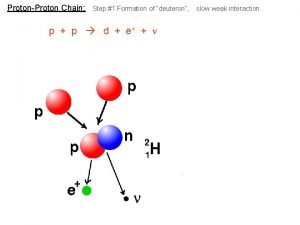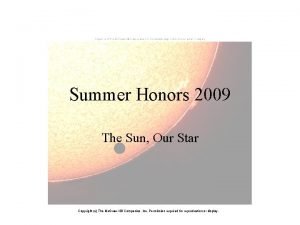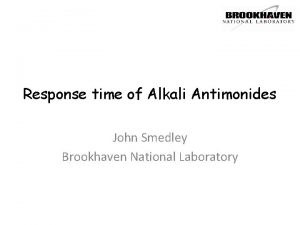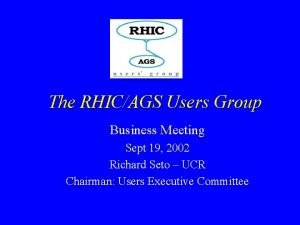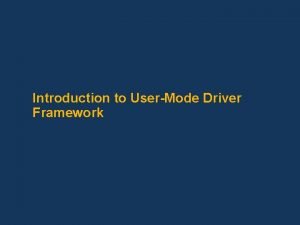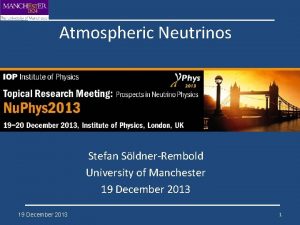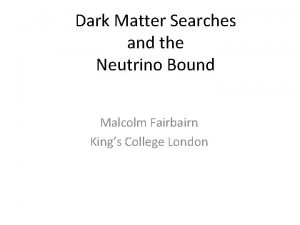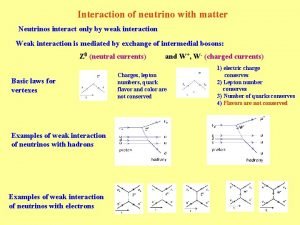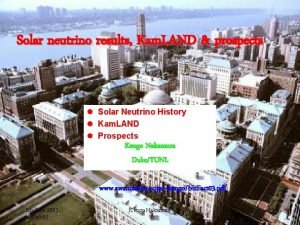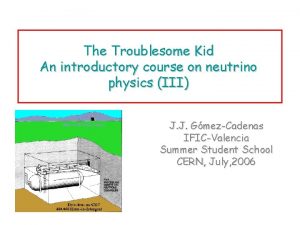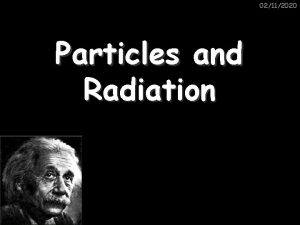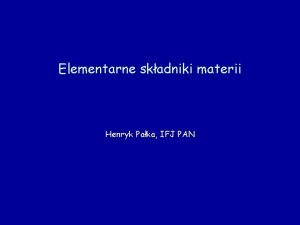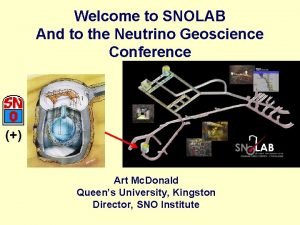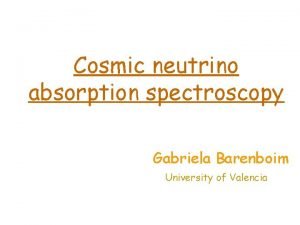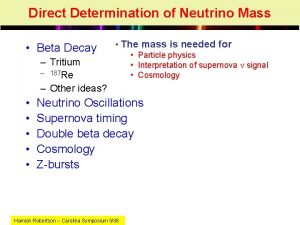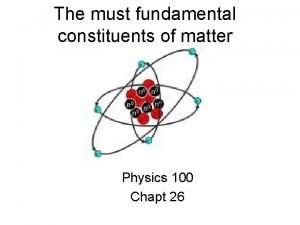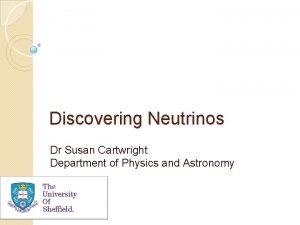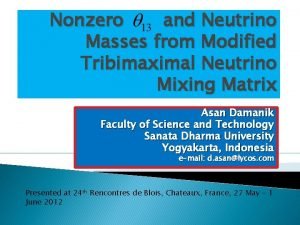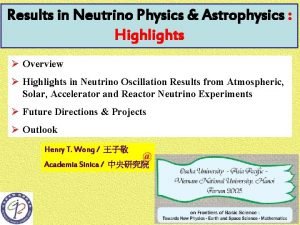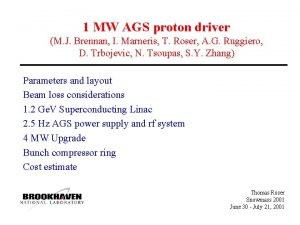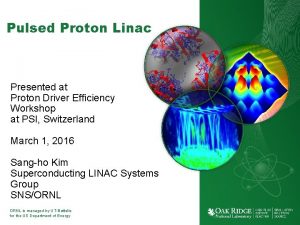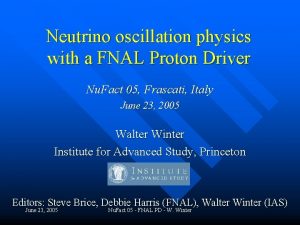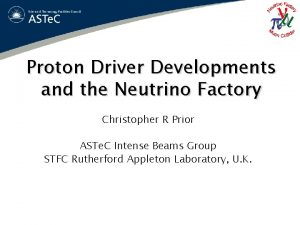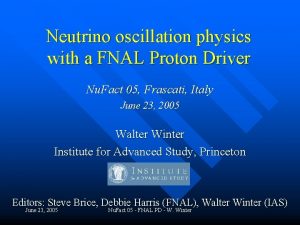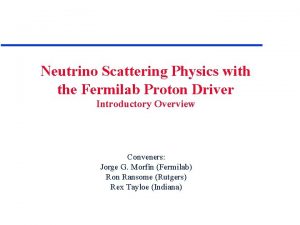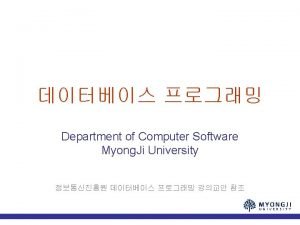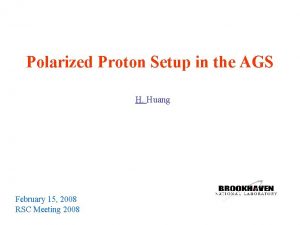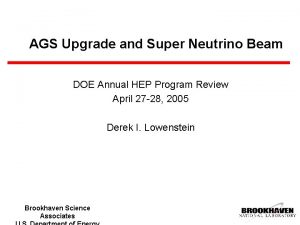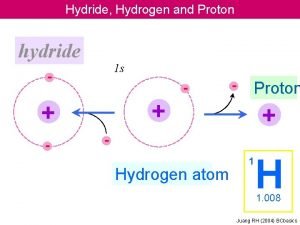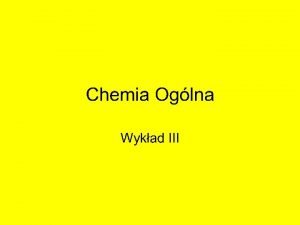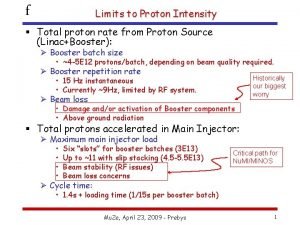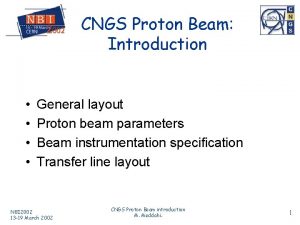AGS as a Proton Driver for a Neutrino























- Slides: 23

AGS as a Proton Driver for a Neutrino Factory W. T. Weng Brookhaven National Laboratory Nu. Fact & Mu-Collaboration UCLA, CA, Jan/29–Feb/1, 2007 1

Outline • • Evaluation of parameter dependence Possible design parameter phase space Improvements on the AGS, and its difficulties Summary and Conclusions 2

Considerations of parameters we consider the effects of 1. Energy 2. Repetition Rate 3. Intensity 4. Bunch Length 5. Number of bunches Of the Proton Driver 3

Proton per pulse required for 4 MW 10 Hz 10 Ge. V 25 Hz 250 × 1012 125 × 1012 50 Hz 100 × 50 × 1012 25 × 1012 4

Process mesons through Cooling Analysis II Post Cooling Count mesons within acceptance of 30π mm 5

Post-cooling 30π Acceptance 6

Preferred Beam Energy • For Negatives the peak occurs for 6 Gev < Proton KE < 11 Ge. V • For Positives the peak occurs for 9 Gev < Proton KE < 19 Ge. V • Consensus: 10 Ge. V is a good place to start 7

Target/Beam Baseline used for comparison 8

Summary of Target Performance 1 MW/50 Hz 12. 0 e+12 ppp YES 4 MW/50 Hz 48. 0 e+12 ppp NO 1 MW/200 Hz 3. 0 e+12 ppp YES 4 MW/200 Hz 12. 0 e+12 ppp MAYBE 9

10

Design Parameter Phase Space 1. 8. 0 Ge. V < Energy < 20. 0 Ge. V 2. Rep Rate ~ 50(25) Hz 3. Intensity 50*10**(12) ppp, at 10(20) Ge. V ( very difficulty with solid target ) 4. Bunch Length < 3 ns, for longitudinal acceptance 5. Number of bunches 3 ~ 5 11

2 MW AGS Proton Driver AGS proton driver layout for alternate injector linac design. 12

Methods of generating Short Bunch • Short bunch can be generated by a compressing RF system • It can also be generated by bunch rotation in the ring, or in the external beam line ( both of them need extreme high rf voltage) • We try to do it by getting to the transition energy at extraction( low voltage is sufficient ) 13

AGS parameters at Transition 14

Beam Parameters around Transition Typical variation of , R, and E as the beam energy increases. 15

Longitudinal Space Charge Effect sc parameter, scaling relation, (E. Courant, 1968) 16

Longitudinal phase space of the proton beam before, at, and after crossing the transition energy in the AGS obtained with the computer code TIBETAN. 17

Expected fractional beam loss upon transition crossing as a function of the initial (95%) longitudinal beam area obtained with the computer code TIBETAN. 18

AGS as a Proton Driver 19

Difficulties with this Scenario • High current and single bunch intensity all exceed space charge limits • Need rebunching for 3 ~ 5 bunches, unless allowing 6 batch extraction over 10 ~ 20 usec. • Limitations of RF and PS systems • Need better matching lattice at transition • Possible beam losses and activation • It seems 2 MW is the upper limit at the AGS 20

Decisions needed on Proton Driver 1. Performance requirements 2. Viability of existing driver proposals 3. Whether to focus on a new design with an integrated design team 4. Cost to the total facility 21

22

Summary and Conclusions • Performance parameters of a PD for Nu. Fact has been reviewed • Ways to convert the AGS are described • It is difficulty to meet all requirements • Site-independent new design has to be initiated, if other existing designs also can not meet the requirements. 23
 Fission definition
Fission definition Proton proton chain
Proton proton chain Proton proton chain
Proton proton chain Role of hr in change management
Role of hr in change management Goto/ags
Goto/ags Laying table cloth
Laying table cloth John smedley ags
John smedley ags Ags logins
Ags logins Rhic ags users meeting 2020
Rhic ags users meeting 2020 Umdf reflector
Umdf reflector Neutrino
Neutrino Neutrino
Neutrino Neutrino interaction with matter
Neutrino interaction with matter Solar neutrino
Solar neutrino Neutrino
Neutrino Emission spectrum of sodium
Emission spectrum of sodium Lekka cząstka elementarna mion elektron lub neutrino
Lekka cząstka elementarna mion elektron lub neutrino Solar neutrino
Solar neutrino Gabriela barenboim
Gabriela barenboim Neutrino mass
Neutrino mass Neutrino symbol
Neutrino symbol Who discovered neutrino
Who discovered neutrino Neutrino
Neutrino Neutrino mass
Neutrino mass
